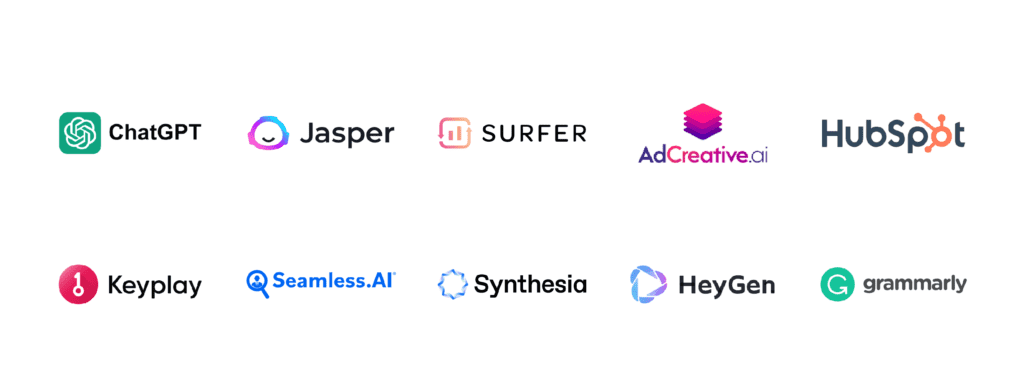AI Automation for B2B: Techniques to Enhance Your Service Performance
AI automation in the B2B market provides a critical opportunity for companies to improve their performance. By enhancing and enhancing processes decision-making, companies can accomplish substantial effectiveness. Nonetheless, the effective combination of AI requires mindful consideration of different variables. Comprehending which locations to automate and picking suitable tools are just the start. The potential for makeover increases vital questions about application and ongoing analysis. What techniques will guarantee long-term success in this progressing landscape?
Comprehending AI Automation in B2B Context
As businesses progressively look for efficiency and technology, understanding AI automation in the B2B context becomes crucial. AI automation leverages innovative innovations to enhance procedures, enhance decision-making, and enhance total efficiency. By incorporating AI tools, companies can maximize procedures such as supply chain administration, consumer partnership management, and information evaluation. These technologies can assess huge quantities of information rapidly, offering actionable insights that drive strategic campaigns. In addition, AI-driven automation reduces human error and releases up workers to concentrate on more complicated tasks. By promoting cooperation in between human knowledge and maker capabilities, services can attain an one-upmanship. Ultimately, recognizing AI automation is vital for B2B organizations aiming to prosper in a significantly digital marketplace.
Determining Areas for Automation
In the mission for reliable AI automation in B2B, it is important to recognize details locations where automation can produce significant advantages. This includes reviewing job monotone, checking out opportunities for data handling, and determining operations bottlenecks. By concentrating on these elements, organizations can improve operations and enhance efficiency.
Job Repetitiveness Assessment
Job repetitiveness analysis plays a crucial role in identifying areas ripe for automation within B2B operations. Minarik AI. This procedure involves assessing daily tasks to identify which are recurring and lengthy, thereby impeding productivity (AI Automation For B2B). By scrutinizing process, businesses can determine specific features that call for extreme manual input, such as information entry, invoice processing, or consumer follow-ups. Identifying these repeated tasks enables organizations to allot sources more effectively, enhancing overall effectiveness. In addition, automation can lessen human error, enhance procedures, and maximize employees to concentrate on higher-value tasks. Conducting a comprehensive job repetitiveness analysis encourages B2B companies to take on targeted automation methods, inevitably driving improved performance and affordable advantage in the market
Information Processing Opportunities

Process Bottleneck Recognition
Recognizing process traffic jams is a critical action in recognizing the full advantages of automation within B2B organizations. These traffic jams commonly show up as delays, resource constraints, or inefficient processes that prevent productivity. To efficiently determine these locations, organizations can perform comprehensive analyses of their process, making use of metrics such as cycle time and throughput. Engaging employees in conversations concerning discomfort factors can also supply important understandings. Organizations can prioritize them based on impact and expediency for automation as soon as bottlenecks are recognized. By purposefully dealing with these inadequacies, B2B companies can improve operations, improve collaboration, and eventually improve total efficiency. This proactive strategy to process assessment prepares for effective automation initiatives that drive company growth.
Selecting the Right AI Devices and Technologies
As companies progressively transform to AI to improve their operations, choosing the right devices and innovations comes to be essential for attaining wanted outcomes. Organizations must evaluate their particular demands and goals, considering factors such as scalability, compatibility, and user-friendliness. A comprehensive market analysis can assist determine leading AI services customized for their sector. Additionally, services need to examine the technological infrastructure needed to sustain these tools, making sure seamless combination with existing systems. Data security and conformity with laws are also important factors to consider that influence device option. By concentrating on these criteria, business can make enlightened decisions that drive performance and efficiency, eventually causing improved company performance. The right AI devices equip companies to innovate and maintain an one-upmanship in the marketplace.
Creating a Strategic Application Plan
A successful critical execution plan for AI automation in B2B requires plainly defined vital objectives. Additionally, organizations need to examine their existing capabilities to identify voids and possibilities for enhancement. Continuous monitoring and modification of the strategy will certainly assure positioning with evolving organization needs and innovation improvements.
Specify Secret Goals
To assure effective AI automation in B2B settings, defining crucial goals is essential for developing a tactical application plan. Organizations has to determine certain, measurable objectives that align with their general organization strategy. This quality gives a roadmap for the automation process, making sure that initiatives are concentrated on locations that will certainly generate the greatest influence. Trick goals may consist of boosting functional efficiency, boosting customer satisfaction, or raising earnings. Establishing these purposes enables teams to prioritize resources efficiently and track progress gradually. In addition, clear purposes promote much better communication amongst stakeholders, promoting partnership and positioning throughout the organization. Ultimately, distinct objectives serve as the structure for a robust AI automation method that drives business efficiency.
Examine Present Abilities
Before implementing AI automation, companies have to thoroughly evaluate their present capabilities to determine weak points and toughness. This evaluation includes examining existing technologies, labor force abilities, and operational procedures. By performing a comprehensive audit, organizations can determine locations that need renovation or financial investment. Organizations ought to additionally consider their data monitoring methods, as the high quality and accessibility of information are essential for successful AI combination. Understanding the present technical landscape allows firms to straighten their resources and capacities with their strategic objectives. Furthermore, it is necessary to review business society and preparedness for modification, as these elements substantially influence the adoption of AI solutions. This evaluation offers as the structure for creating a tactical implementation plan that maximizes the capacity of AI automation.
Monitor and Readjust
Carrying out AI automation requires a dynamic method that highlights constant monitoring and change. Organizations must create a calculated execution strategy that integrates routine evaluations of AI efficiency against predefined metrics. This entails tracking key efficiency indications (KPIs) to assess the effectiveness of automation remedies. By assessing data, companies can determine locations for improvement and adjust their AI systems as necessary. Engaging with stakeholders throughout the procedure assures that the automation aligns with company purposes and user demands. Additionally, cultivating a society of versatility allows firms to respond quickly to altering market problems and technological improvements. AI Automation For B2B. Inevitably, continuous surveillance and change not just boost functional performance but also drive continual business performance in the competitive B2B landscape
Ensuring Information Quality and Assimilation
As companies increasingly depend on AI automation in B2B processes, making sure data quality and combination comes to be crucial for success. Premium information is essential for accurate analytics, informed decision-making, and reliable client engagement. Data need to be cleaned up, standard, and confirmed to eliminate errors and incongruities that could result in misdirected insights. Furthermore, seamless combination throughout various platforms and systems is necessary; disparate data silos impede automation efforts and minimize operational performance. Organizations needs to take on durable information governance frameworks and make use of innovative tools to assist in data combination while preserving top quality requirements. By focusing on these components, services can boost their AI automation initiatives, inevitably bring about boosted performance and an affordable benefit in the B2B landscape.
Determining Success and ROI of AI Initiatives
Exactly how can organizations efficiently measure the success and roi (ROI) of their AI campaigns? To determine effectiveness, organizations must develop clear, measurable objectives aligned with critical goals. Trick efficiency indications (KPIs) such as expense savings, revenue growth, and productivity enhancements can provide useful understandings. Organizations frequently perform baseline evaluations before applying AI, enabling them to compare pre- and post-implementation metrics. In addition, assessing customer complete satisfaction and engagement can disclose the impact of AI on customer experience. On a regular basis evaluating these metrics assists in refining AI techniques and making certain alignment with organization objectives. By utilizing a structured strategy to dimension and assessment, companies can accurately assess the effectiveness of their AI campaigns and make educated decisions regarding future financial investments.
Getting Over Difficulties in AI Adoption
Lots of companies identify the capacity of AI to change their procedures, they usually encounter significant challenges during adoption - Minarik AI. Key obstacles include a lack of experienced personnel, which interferes with the reliable implementation and monitoring of AI innovations. Organizations also encounter assimilation issues, as existing systems may not be suitable with brand-new AI options. In addition, issues pertaining to data personal privacy and safety and security can lead to hesitance in completely embracing AI abilities. Resistance to transform from staff members can better complicate the change, requiring comprehensive training and communication strategies. To get rid of these challenges, organizations ought to purchase ability development, assurance durable data governance, and cultivate a culture that accepts innovation, inevitably leading the way for effective AI integration and improved company efficiency
Frequently Asked Inquiries
Just How Can AI Automation Improve Consumer Relationship Administration in B2B?
AI automation can boost consumer relationship management in B2B by streamlining interaction, offering tailored communications, examining client data for insights, automating follow-ups, click here for more and boosting reaction times, ultimately cultivating more powerful connections and driving sales development.
What Industries Benefit The Majority Of From AI Automation in B2B?
Manufacturing, financing, health care, and logistics markets profit most from AI automation in B2B. These sectors utilize automation to improve processes, enhance information analysis, enhance consumer interactions, and ultimately boost functional performance and earnings.
Just How Does AI Automation Impact Employee Duty in B2B Firms?
AI automation transforms worker roles in B2B business by simplifying tasks, decreasing repeated job, and enabling personnel to concentrate on calculated initiatives. This shift improves efficiency and promotes a culture of innovation and adaptability.
What Are the Expenses Associated With Applying AI Automation?
The costs associated with executing AI automation consist of initial software program acquisition, infrastructure upgrades, training costs, ongoing upkeep, and prospective assimilation obstacles. Minarik AI. Companies must also consider long-term functional changes and staff member adjustment expenses in their monetary planning
How Can Businesses Make Sure Honest AI Usage in Their Procedures?
Businesses can guarantee honest AI use by developing clear guidelines, advertising transparency, carrying out normal audits, including varied stakeholders, and prioritizing information personal privacy. Continual training and awareness programs better boost understanding and adherence to honest practices.
